- News
- Reviews
- Bikes
- Accessories
- Accessories - misc
- Computer mounts
- Bags
- Bar ends
- Bike bags & cases
- Bottle cages
- Bottles
- Cameras
- Car racks
- Child seats
- Computers
- Glasses
- GPS units
- Helmets
- Lights - front
- Lights - rear
- Lights - sets
- Locks
- Mirrors
- Mudguards
- Racks
- Pumps & CO2 inflators
- Puncture kits
- Reflectives
- Smart watches
- Stands and racks
- Trailers
- Clothing
- Components
- Bar tape & grips
- Bottom brackets
- Brake & gear cables
- Brake & STI levers
- Brake pads & spares
- Brakes
- Cassettes & freewheels
- Chains
- Chainsets & chainrings
- Derailleurs - front
- Derailleurs - rear
- Forks
- Gear levers & shifters
- Groupsets
- Handlebars & extensions
- Headsets
- Hubs
- Inner tubes
- Pedals
- Quick releases & skewers
- Saddles
- Seatposts
- Stems
- Wheels
- Tyres
- Health, fitness and nutrition
- Tools and workshop
- Miscellaneous
- Buyers Guides
- Features
- Forum
- Recommends
- Podcast
review
£2,529.52
VERDICT:
Heavy and stiff aero bike with subpar performance and integrated electronics that feel like a work in progress
Weight:
8,760g
Contact:
At road.cc every product is thoroughly tested for as long as it takes to get a proper insight into how well it works. Our reviewers are experienced cyclists that we trust to be objective. While we strive to ensure that opinions expressed are backed up by facts, reviews are by their nature an informed opinion, not a definitive verdict. We don't intentionally try to break anything (except locks) but we do try to look for weak points in any design. The overall score is not just an average of the other scores: it reflects both a product's function and value – with value determined by how a product compares with items of similar spec, quality, and price.
What the road.cc scores meanGood scores are more common than bad, because fortunately good products are more common than bad.
- Exceptional
- Excellent
- Very Good
- Good
- Quite good
- Average
- Not so good
- Poor
- Bad
- Appalling
The SpeedX Leopard Pro comes off the back of a very successful Kickstarter campaign, and as a bike it shows some promise, but there are some big teething problems with the current model I've been riding, and I'm not convinced by either the concept or the actualisation of the integrated computer. Overall, it's more miss than hit.
The heart of the bike is the frame, and in this case it's an aero-optimised carbon monocoque made from a mix of high-modulus T1000 and T800 fibres, with the matching fork using the same ingredients. Those are high grades of carbon so you should be able to make a pretty light frame out of them; SpeedX claims a 1.2kg frame weight for the Leopard Pro, which is okay but a fair bit more than many recent aero frames that have been nudging under a kilo. Our test bike came with a raw finish; there's no vanity layer on top and no paint finish. Bikes being shipped in 2017 will have a matt black finish.
The Leopard Pro is built up with a Shimano Ultegra Di2 groupset and SpeedX's own carbon 50mm section wheelset. The brakes are TRP TTV aero direct-pull brakes, with the rear brake sitting under the bottom bracket and the front at the rear of the fork leg for maximum aerodynamic advantage. The seatpost and handlebar are carbon, and the stem incorporates the SpeedX computer.
You get a Fizik Arione R7 saddle to sit on and flat pedals are included too, although you'll most likely be swapping them out for your choice of clipless ones. Fully built (without pedals), our test bike weighed in at 8.76kg. No two ways about it: that's heavy for a £2,500 aero bike. It's about a kilo over the odds, and even more compared with some, for example the 7.2kg Rose Xeon CW-3100.
Where's the extra weight? Well, some of it is in the frame, but a lot of it is in the computer and its battery. The wheels aren't especially heavy, so the electronics need to be adding around half a kilo in total. Compared with a sub-100g Garmin, that's a lot. Those integrated electronics are one of the major selling points of this bike, so let's explore them in a bit of detail.
Integrated electronics
There's a computer that's part of the stem design, sitting in front of the bar clamp, and it's powered from a battery in the seatpost, which also incorporates an LED rear light that's motion-activated. Cadence and speed sensors are also wired in, as well as Bluetooth and ANT+ connectivity. The integration is pretty neat, and the bike has a big button in place of a stem cap as well as smaller function buttons on the sides. The 320x240 screen is a similar resolution to a Garmin or similar GPS and it's good in sunlight and overcast conditions.
SpeedX claims a battery life of 40 hours: it basically records whenever you're riding the bike, and you can use the big button to switch between displays. The life of the computer is impressive, but it does mean you're lugging a big old battery about; the Di2 in the Leopard Pro runs off its own battery so if your computer dies you'll still have working gears, but it also means you're doubling up on batteries, which adds to the weight.
The cadence magnet is designed to fit in the back of the flat pedals that SpeedX supplies with the bike, in the 6mm hex bolt hole. That means if your pedals use an 8mm hex, as many road pedals do, it won't fit. I Blu-Tacked mine in. It fell out, though. It's somewhere on the Mendips.
The SpeedX integrated computer is designed to sync with a smartphone app to extend the capabilities of the computer. In theory you'll be able to get training plans, turn-by-turn directions, compete against other riders, be part of a global community, all sorts. I say 'in theory' because currently the app is a real weak point of the system. It has a clunky interface and even the most basic functions don't really work. Synchronising data between the bike and the app failed every time, and that means that anything that I've just recorded on the bike is still on it, and not anywhere else. You can also record from the smartphone app, although that sort of defeats the object of having the sensors integrated into the bike.
Updates have improved the app a bit, but it's a long way from being good. You can't even sync to Strava yet, which certainly should have been a must-have on the launch list. That functionality is coming.
Here's where I'm at with the app and the integrated computer: I can't help thinking that it's a solution in search of a problem. You're tying yourself to a specific hardware setup for the life of the bike, when your add-on options are constantly changing. There's nothing that the computer is doing that requires it to be built into the frame. If it were measuring power from strain gauges in the down tube, for example, that might be a reason to build the rest of the electronics in too. But as it stands, the Leopard Pro is only recording the same stuff that you get from non-integrated solutions.
If you're going to use the bike to record all your data, then the SpeedX integrated system does a decent job, assuming at some point the app will work well enough to give you access to it. But the SpeedX computer isn't anywhere near as polished as something like a Garmin 520, and next year there'll probably be a Garmin 530, or 540, or whatever, that'll be even better and you'll have the option to swap. Here you don't.
If you go down the other route and like to use your phone to record and pump that info to a display, then again the landscape is changing and new units like the Wahoo Elemnt are offering more and more functionality.
Then there's the issue of creating another new and proprietary platform. If you want to log all your riding and keep your data in one place then the overwhelming likelihood is that you're already doing that, most likely in Strava or Garmin Connect. If you like to compete against others then you're probably doing that in Strava too, and if you're after a training solution then again there are lots of options, including the highly sophisticated and well-populated Trainerroad and TrainingPeaks.
To be able to offer comparably populated alternatives to all of these on a new, proprietary, platform would require a market share that no major bike manufacturer could realistically achieve, let alone a startup like SpeedX. In the same way that Garmin has tried and mostly failed to get its own segments functionality going when Strava already has a massive following, the SpeedX platform is doomed to remain pretty empty unless it's offering something that's genuinely new, or at least doing the same things much better.
Ride & handling
On to the rest of the bike. How does it actually ride? With a stack height of 564mm and a reach of 408mm, the Leopard Pro is a fairly aggressive machine, and the slightly-sharper-then-usual 74-degree seat tube angle puts you marginally further forward on the bike, which accentuates the nose-down feel a bit. Compared with, say, the Giant Propel Advanced 1 we tested this year, the SpeedX is 17mm longer and 2mm lower at the front, and also 11mm longer in the wheelbase. They're not big differences but they're noticeable.
The Leopard Pro rolls along nicely on the flat, smooth stuff. It's a very stiff unit, and stamping on the pedals results in good straight-line speed when you wind it up. The longish wheelbase translates into a pretty planted ride, and with the low front you're nice and aero in the drops. So long as the surface stays good the Leopard Pro is enjoyable to ride, but it struggles on more degraded tarmac.
Part of the issue is the 23mm tyres; the frame will accommodate 25s and the bike should come with them, because there's not much by way of damping available from the super-stiff frame. Road shock gets quite efficiently transmitted to the handlebar and the saddle. Aero bikes aren't designed to be sofas, but this frame is certainly at the firm end of the spectrum, even for aero. Over rougher roads it's a bit jumpy and that robs you of your form and your power, and consequently your speed.
Climbing is a mixed bag too: if you're powering over a short rise then the stiffness in the frame outweighs the weight of the bike and it's quite a nice bike to punch over a small hill. Standing up isolates you from the road feel too. If it's a longer climb and you're sitting and spinning then you can feel the weight of the bike, and on steeper, rougher bits the Leopard Pro feels a bit skittish and can lack for grip at the rear; Vittoria Rubino Pro tyres aren't the best in that regard and the very stiff frame doesn't help.
Braking
TRP's TTV brake callipers are about as good a set of direct-pull aero brakes as you're going to find, but they're compromised at both ends by the carbon rims and the supplied brake pads, which were grabby and prone to squealing. At the rear the slightly tortuous cable routing to the low-mount brake made the bite feel a bit vague – this isn't a problem limited to the Leopard Pro, by any means – and I had some issues with the brake bite pulsing at one point in the wheel revolution, suggesting that the tolerance on the rim thickness was a little bit out.
In the wet the performance didn't degrade that much, to be fair, but that's from a starting point of being fairly average. It's the sort of brake performance that has you reaching for the drops on technical descents not for aero advantage but because you're not that confident of stopping yourself from the hoods. You'll stop, but you find yourself thinking ahead rather than living in the moment.
The wheels themselves are decent enough 50mm carbon rims on SpeedX-branded hubs. They're not especially heavy at about 1,750g a set, and for a reasonably deep wheelset they're fairly well behaved in the wind, though not as predictable as my current bechmark wheel in that regard, the Swiss Side Hadron 485. The aforementioned issues with brake pulse is an issue, though, and they're a narrow rim design that looks a few years old. Overall I'd prefer for the bike to be offered with a standard wheelset too, so that you can spec your own wheels.
Post truth
The biggest single issue I had with the bike was with the seatpost and the seatpost clamp. I'm a big rider (1.89m, 93kg) and there was no amount of torque I could put into the clamp that would make the seatpost stay put over a long ride. The tolerances between the seatpost and the frame aren't very tight. There are gaps all around, so the seatpost is only in contact with the clamp and the rear face of the seat tube; the contact patches are fairly small. The clamp is a wedge design, which pushes the seatpost against the frame, rather than a pinch clamp that pulls the frame onto the post. That means that you just don't have enough contact between the two parts, even with levels of torque on the single 4mm bolt that I'd never have attempted if it had been my bike, that I'd paid money for. SpeedX supplies grip compound with the bike and I applied plenty, but to no avail – the seatpost kept on slipping. In the course of a three-hour ride I'd have to readjust it about once an hour.
This is a deal-breaker, really, if you're a bigger rider. There's not really anything you can do to remedy the seatpost slippage; it's a design issue and hopefully it'll be addressed in later versions of the bike. If you're a smaller and lighter rider than me (you probably are) then it'll be increasingly less of an issue until it isn't one at all; if you're a 70kg rider I doubt you'd have any problems.
If you're smaller and you set your saddle lower than I do, you may find you have other issues with the charging port for the battery being inside the frame, meaning you'll need to remove the seatpost (or at least hike it up) to charge the computer when it runs down. The port is in a position where a pretty standard bike setup would result in the port being obscured.
This bike is badged up as an XXL, so you might expect it to be 580-590mm long in the top tube, but it's actually only 570mm, and this is the biggest bike that SpeedX has made thus far, although a 590mm size is in the offing. Its frame sizing chart suggests the XXL bike is good for riders with an inseam up to 88cm. If you're any lankier than me, you're going to find the Leopard Pro too small until the 590mm (XXXL, presumably) bike surfaces.
> Read our guide to the fastest aero road bikes
At the moment the SpeedX computer and app aren't as good as the alternatives, and the bike they're physically mated too has plenty of issues of its own. If you want an aero bike and you're serious about your data then for now my suggestion would be to look at a well-reviewed bike and a Garmin computer with a heart rate bundle.
All bikes have their foibles but there's a big list of them – Giant Propel, Canyon Aeroad, Rose Xeon CW, Specialized Venge to name four – that are better than the Leopard Pro. And Garmins have their issues too, but they're still the computer to beat and SpeedX hasn't even got close to beating them on this first incarnation. The Leopard Pro might yet come of age, but for now, look elsewhere.
Right to reply
We made SpeedX aware of some of the issues we had with the bike during testing, and their response is below:
At SpeedX we are constantly reviewing and evaluating our bikes and we have made a number of improvements to the bike to improve performance and deliver the best product possible for the price. There is a lifetime replacement guarantee on SpeedX carbon fibre frames. We also offer a 7-day no-questions-asked return and a 30-day free exchange policy.
Bike weight: We believe we can reduce the weight of the finished bike; more details will be provided in 2017
SpeedForce App: Software updates mean customers will be able to link to third party sites such as Strava from Q1 of 2017
Seatpost: SpeedX will now provide a seal in all Leopard and Leopard Pro packaging for customers to place at the bottom of the seatpost. The bolt for the seatpost clamp has been upgraded which means it is easier to adjust the seatpost. SpeedX will provide extra bolts together with the bikes
Cadence sensor: SpeedX will provide an additional cadence sensor which will be compatible for all pedals.
Tyres: When choosing the bike online there will soon be options to select a wider tyre
Colour Update: All black frames will now be delivered in a solid matte black finish which gives the bike an even sleeker finish.
As this is our first ever product, SpeedX will continue to take feedback on board to develop and improve our product offering, ensuring that customers receive the best possible service.
Verdict
Heavy and stiff aero bike with subpar performance and integrated electronics that feel like a work in progress
road.cc test report
Make and model: SpeedX Leopard Pro
Size tested: 57cm
About the bike
State the frame and fork material and method of construction. List the components used to build up the bike.
FRAME SPEEDX 700C T1000&T800 CARBON BIKEFRAME
FORK SPEEDX 700C T1000&T800 CARBON FRONTFORK
FRAME SIZE 42CM/45CM/48CM/51CM/54CM/57CM/59CM
HANDLEBAR SPEEDX CARBON ROAD BAR
STEM SPEEDFORCE STEM 2.0
SEAT POST SPEEDX CARBON SEAT POST
SADDLE fi'zi:k Arione R7
BRAKES TRP TTV BRAKE
CRANKSET SHIMANO ULTEGRA FC-6800 52/36T
B.B. SET SHIMANO SM-BB71-41B
SHIFTERS SHIMANO UT DI2 ST-6870 2X11S
FRONT DERALLIEUR SHIMANO UT DI2 FD-6870
REAR DERALLIEUR SHIMANO UT DI2 RD-6870
CASSETTE SPROCKET SHIMANO UT CS-6800 11-28T
CHAIN KMC X11
WHEELSET SPEEDX 50MM WHEEL SET
TIRES VITTORIA RUBINO 700X23C
Tell us what the bike is for, and who it's aimed at. What do the manufacturers say about it? How does that compare to your own feelings about the bike?
The best frames start with sourcing the best materials. Our frame uses only the finest carbon composites in the world. Together with FIBERTEK®, we developed proprietary methods and technologies to stack the T1000 military-grade carbon fiber. Every bike frame stacks 207 folded layers, which ultimately leads to a phenomenally light 1.2kg frame.
SPEEDX SMART CONTROL
Make Every Ride Magical
Imagine a bike with a brain-taking care of everything except the cycling. That's just what we made SpeedX Smart Control to do. It records your ride data and provide you with professional analysis. We designed XCoach specifically to prepare professional training courses-with interesting tasks and challenge, as well as global ranking tables.
Designed by frog
Full Internal Cable Routing | Air Force X-Tech | frog
We're determined to solve the problems that the bike industry has wrestled with for centuries. That's why SpeedX is in illustrious company in becoming only the third bike brand to use independent research on full internal cable routing. The design and strategy firm frog took place in the design process of the bike The result? A stunning frame that reduces drag. Beyond the jaw-dropping aesthetics, you'll get a more efficient ride, so you can put all your energy into going faster.
Competition-Level Performance
The Leopard boasts a simple, sleek look, matched only by the excellence of its riding experience. We thought long and hard about our choice of a race-ready SHIMANO drivetrain, TRP fully internal brakes and a T1000
carbon fiber frame, front fork and seat post. The Leopard will surpass your every riding need: whether for intense training and competition or a Sunday spin with friends, it offers unparalleled comfort and enjoyment.
Frame and fork
Overall rating for frame and fork
6/10
Tell us about the materials used in the frame and fork?
FRAME SPEEX T1000&T800 CARBON
FORK SPEEDX T1000&T800 CARBON
Tell us about the geometry of the frame and fork?
XXL: Stack 564mm, Reach 408mm, Effective Top Tube 570mm, Head tube 73°, Seat tube 74°
How was the bike in terms of height and reach? How did it compare to other bikes of the same stated size?
Quite an aggressive position, good in terms of reach although I'd have liked another 10mm on the top tube.
Riding the bike
Was the bike comfortable to ride? Tell us how you felt about the ride quality.
Not particularly comfortable: stiff frame and small tyres.
Did the bike feel stiff in the right places? Did any part of the bike feel too stiff or too flexible?
It's certainly not lacking in stiffness.
How did the bike transfer power? Did it feel efficient?
Very efficient on smooth surfaces, not so good on rougher roads.
Was there any toe-clip overlap with the front wheel? If so, was it a problem?
No issues.
How would you describe the steering? Was it lively, neutral or unresponsive? Neutral.
Tell us some more about the handling. How did the bike feel overall? Did it do particular things well or badly?
Steering is pretty predictable and there's lots of front end stiffness.
Which components had the most effect (good or bad) on the bike's comfort? would you recommend any changes?
Needs bigger tyres to compensate for the stiff frame.
Which components had the most effect (good or bad) on the bike's stiffness? would you recommend any changes?
BB stiffness is good but could do with a bit more compliance to the saddle; again, bigger tyres would help.
Rate the bike for efficiency of power transfer:
8/10
Rate the bike for acceleration:
6/10
Rate the bike for sprinting:
6/10
Rate the bike for high speed stability:
7/10
Rate the bike for cruising speed stability:
9/10
Rate the bike for low speed stability:
8/10
Rate the bike for flat cornering:
7/10
Rate the bike for cornering on descents:
7/10
Rate the bike for climbing:
5/10
The drivetrain
Rate the drivetrain for performance:
10/10
Rate the drivetrain for durability:
8/10
Rate the drivetrain for weight:
8/10
Rate the drivetrain for value:
8/10
Tell us some more about the drivetrain. Anything you particularly did or didn't like? Any components which didn't work well together?
Shimano Ultegra Di2 is well proven and hard to beat.
Wheels and tyres
Rate the wheels for performance:
5/10
Issues with rim tolerance; okay in the wind but not class-leading.
Rate the wheels for durability:
7/10
Rate the wheels for weight:
6/10
Rate the wheels for comfort:
6/10
Rate the wheels for value:
6/10
Rate the tyres for performance:
6/10
Rate the tyres for durability:
6/10
Rate the tyres for weight:
7/10
Rate the tyres for comfort:
4/10
Rate the tyres for value:
6/10
Tell us some more about the tyres. Did they work well in the conditions you encountered? Would you change the tyres? If so, what for?
Vittoria Rubinos are okay OEM tyres, but 23mm tyres feel harsh, especially on a bike like this.
Controls
Rate the controls for performance:
2/10
Rate the controls for durability:
6/10
Rate the controls for weight:
2/10
Rate the controls for comfort:
5/10
Rate the controls for value:
4/10
Tell us some more about the controls. Any particularly good or bad components? How would the controls work for larger or smaller riders?
Including seatpost and integrated electronics in this mark. Both are poor.
Your summary
Did you enjoy riding the bike? Not really.
Would you consider buying the bike? No
Would you recommend the bike to a friend? No
Rate the bike overall for performance:
3/10
Rate the bike overall for value:
4/10
Use this box to explain your score
You can discern promise in this bike but realistically it's a long way from being the finished article. There are too many issues here to make it a realistic competitor in a very crowded market. The integrated electronics add more weight than they do new functionality, and the harsh frame suffers from wheel and tyre choice and subpar braking.
About the tester
Age: 43
I usually ride: whatever I'm testing... My best bike is: Kinesis Tripster ATR, Kinesis Aithein
I've been riding for: Over 20 years I ride: Every day I would class myself as: Experienced
I regularly do the following types of riding: road racing, time trialling, cyclo-cross, commuting, club rides, sportives, general fitness riding, fixed/singlespeed, mountain biking, Mountain Bike Bog Snorkelling, track
Dave is a founding father of road.cc, having previously worked on Cycling Plus and What Mountain Bike magazines back in the day. He also writes about e-bikes for our sister publication ebiketips. He's won three mountain bike bog snorkelling World Championships, and races at the back of the third cats.
Latest Comments
- ktache 3 hours 28 min ago
The small frame, the aggressive posture, lots of standover height.
- mctrials23 4 hours 24 min ago
As i've said before, the police should be sued for a lot of money when someone they have knowingly ignored has gone on to commit a serious crime....
- David9694 4 hours 31 min ago
'Bad parking' blocks firefighters multiple times on same emergency call-out...
- David9694 4 hours 35 min ago
Cambridgeshire boy, 13, crashes Audi into garden wall after taking it from home...
- Adam Sutton 5 hours 21 min ago
Good stuff. Now do it on cycleway C9 through Hammersmith to Chiswick.
- mark1a 5 hours 30 min ago
It's technically allowed but it's not known as "London's Orbital Car Park" for nothing.
- Dogless 6 hours 38 min ago
You're defending bombing hospitals and refugee camps and starving children.
- mattw 9 hours 18 min ago
Used car salesman is a complete attention-seeking plank....
- tubasti 9 hours 35 min ago
I don't know if they're any better, but they's certainly become more boring.
- FionaJJ 10 hours 1 min ago
At risk of being cynical, and stereotyping the police, it's so they don't have to leave the comfort of their panda cars and pursue on foot when...





















































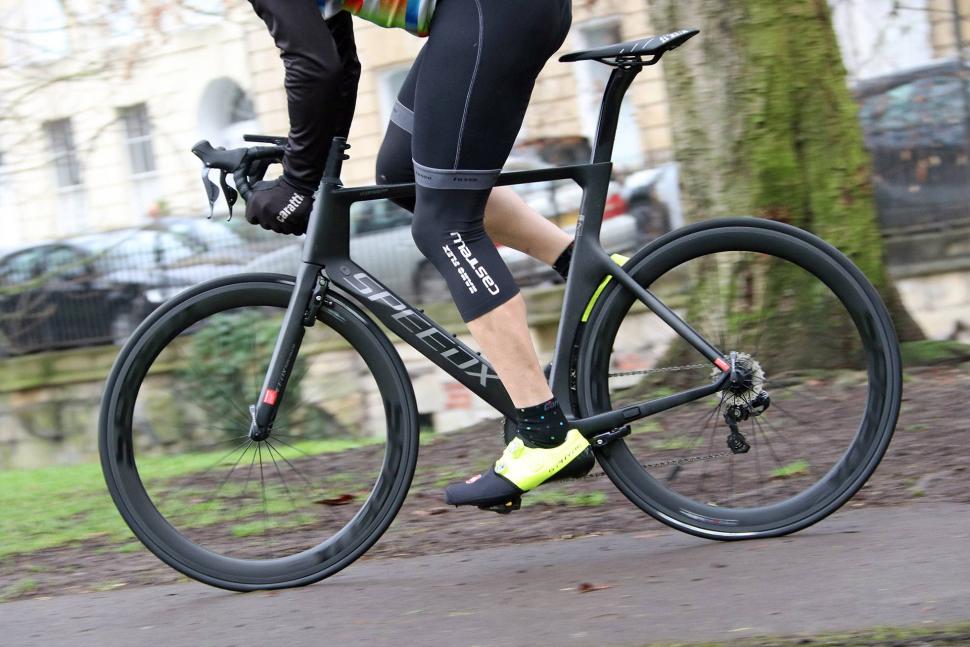


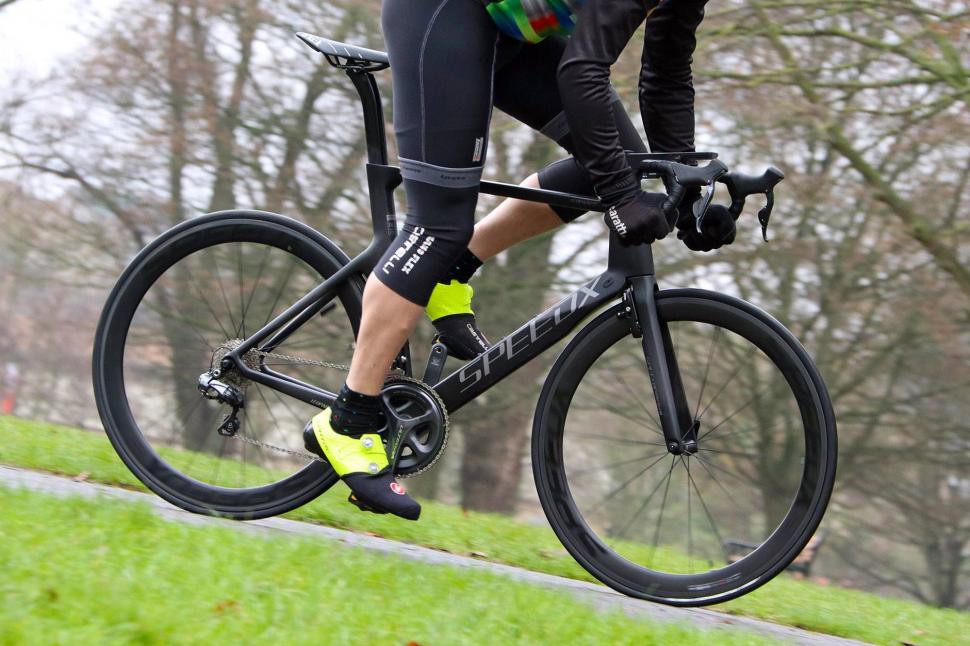

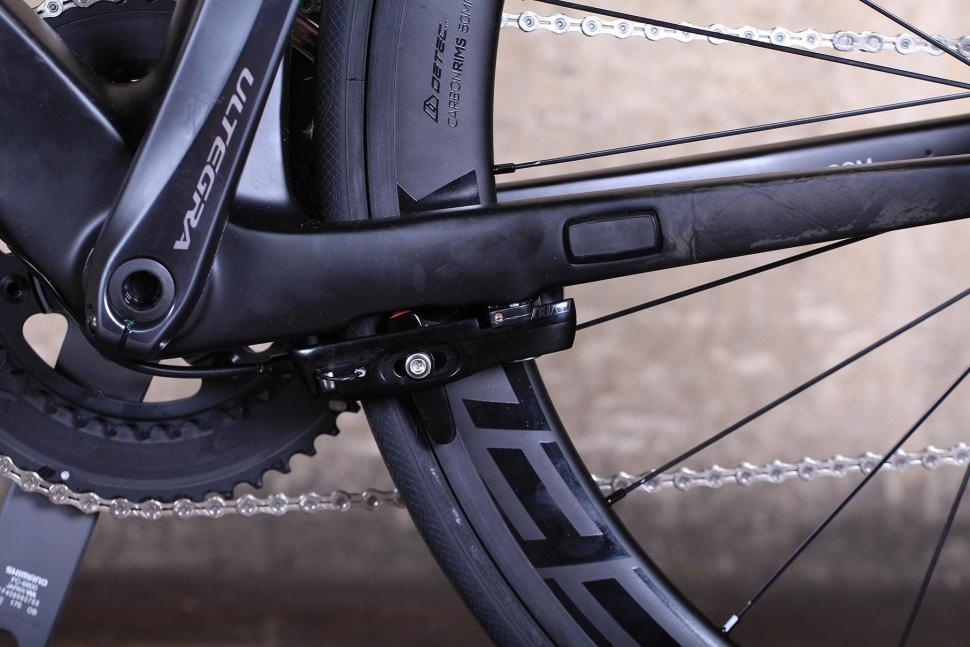



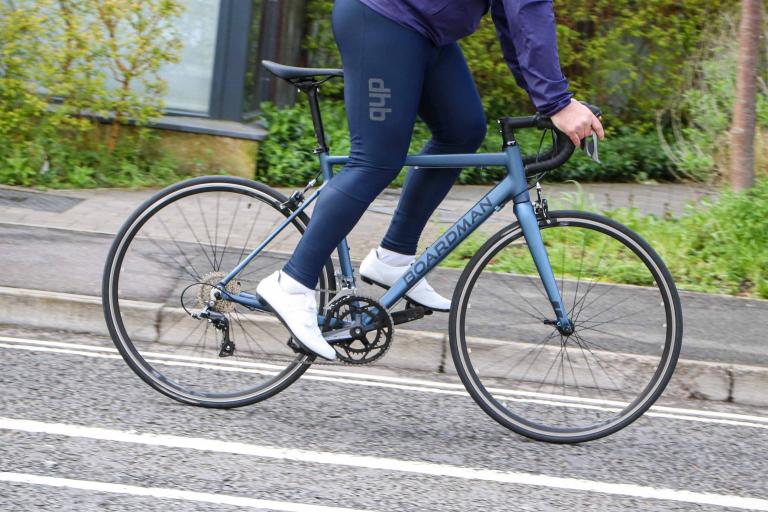
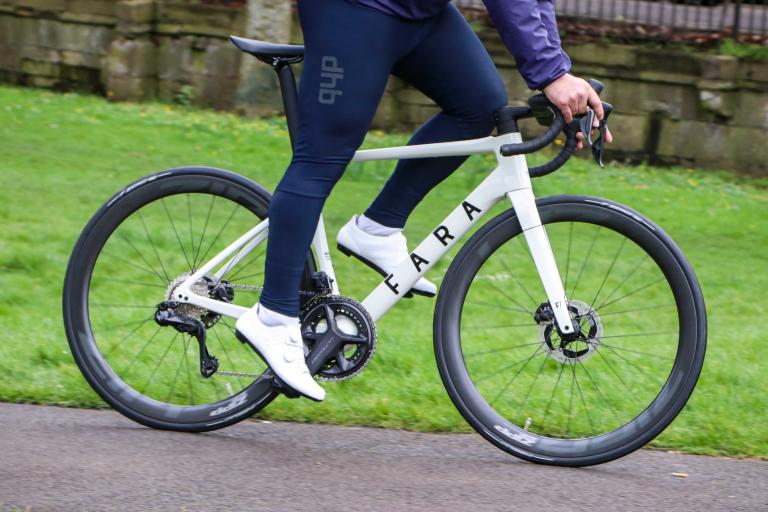
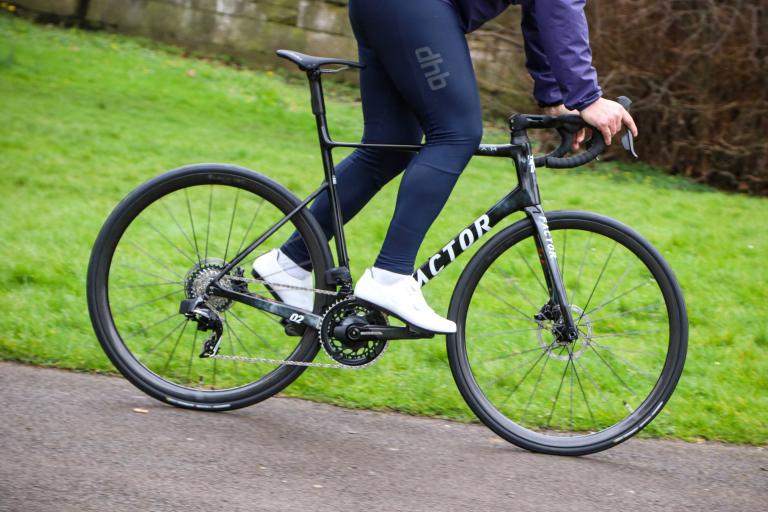
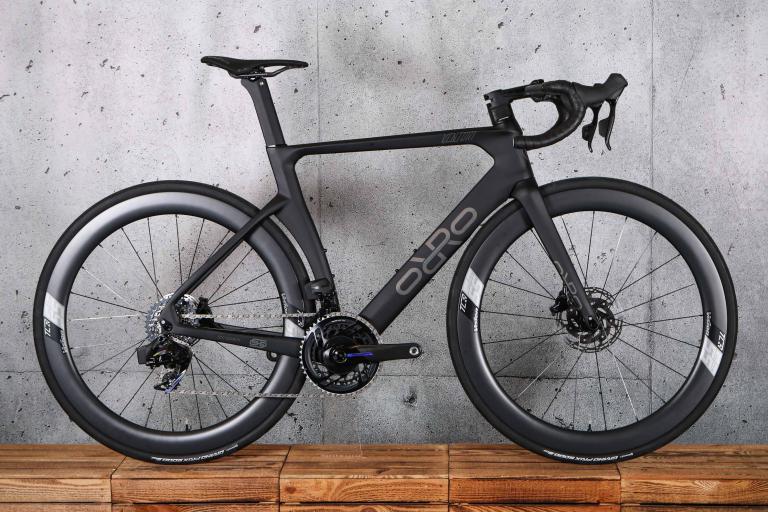
Add new comment
15 comments
Nice to review utilizing the full range of scoring once in a while (i.e. its a dog, think how many glowing reviews there are on here.)
I think people are missing the point if the bike rode nicely Dave (can I call you Dave or is it Mr Atkinson? would have given it higher stars. But the fact that it didn't ride that well, weighed more than today's norms, the seat post kept dropping, and the tech didn't work kind of justified the rating.
would have given it higher stars. But the fact that it didn't ride that well, weighed more than today's norms, the seat post kept dropping, and the tech didn't work kind of justified the rating.
You can have the lightest bike possible but if it feels like crap to ride what's the point?
There's nothing wrong with integrated electronics - I always wanted a Raleigh Vektar when I was a nipper!
tumblr_n7374mmow61spoqhxo4_500.jpg
Still can't see any rationale for buying a bike with integrated electronics, unless you're a pro rider and desperate for seriously detailed metrics, which this still isn't delivering.
For anyone else, I'd stick with something that can be swapped between bikes, is upgradable and replacable if it breaks.
I'm perfectly happy for my computer and lights to be independent and have their own batteries.
If I'm seeing these pictures correctly the carbon layup on this frame looks poor. I wouldn't feel safe on it.
And why they didn't put 100% of their time into a decent computer rather than spread themselves so thinly I'll never know.
That said, everyone's got to start somewhere. They seem a smart (if misguided) bunch so if they survive long enough to keep iterating I suspect they'll do well.
it doesn't have a vanity layer and it's a raw finish. i don't think the layup is an issue, personally. we're used to seeing an added finish and SpeedX are changing to a matt black finish for the next run
I think the point is that 1.2kg for an aero 57 frame isn't that lardy, but the overall package is a tad bloated (I'm suprised an 8.8kg 57 aero bike is deemed heavy, but things have moved on. The skinny models have taken some of their aero stablemates' features and remained light - see the Merida Scultura). So it needs to be a good ride...
This is a new entrant to two competitive marketplaces; it doesn't seem to do particularly well at either, and it combines them together. Such a bold move required gadgetry that blew Garmin out of the water, tied to a bike that holds its own with the Taiwanese brands at this price.
Its failure on both fronts seems to be matched only by its success at marketing bullshit.
The Leopard boasts a simple, sleek look, matched only by the excellence of its riding experience. We thought long and hard about our choice of a race-ready SHIMANO drivetrain, TRP fully internal brakes and a T1000 carbon fiber frame, front fork and seat post. The Leopard will surpass your every riding need: whether for intense training and competition or a Sunday spin with friends, it offers unparalleled comfort and enjoyment.
Wow - I'd like to see the weight compared to a similar S5. The review slates this but i think it may well compare quite closely to, certainly a 2015 S5 (about 5.5k). Exactly the same seatpost clamp btw.
Looking at the weight of the canyon aero 8 offering - add a garmin 820 and...
plus the madness of Strava synching a garmin AAAGH!
So I think it all seems a bit harsh, though you would be brave to be a very early adopter
The S5 is hardly cutting edge these days, even the revamped version is two and a half years old. There's plenty of aero frames (Scott Foil, Canyon Aeroad, etc) that are under a kilo: Target weight for a decent spec aero road bike is about 7.5kg or below, the Aeroad 8 you mention has a claimed weight of 7.2kg (XL frame would be at least 100g more) and a Garmin 820 weighs about 100g.
When you say "exactly the same seatpost clamp", there's lots of bikes using a clamp design like this effectively. This bike is not.
You might find syncing your Garmin to Strava difficult, personally I've never had a problem. But either way, it is actually something you can do, which is a rung above the SpeedX right now.
Dodged a speedxing bullet there....
You weigh 93kg (not saying you're fat!!) and you're complaining about feeling the extra 1kg on you think this machine is over by on climbs?!?
Yes. I'm not necessarily saying it's making a huge difference to the time i'd take to get to the top but there's certainly a difference in feel between this and a lightweight bike. it's more to do with the way the extra weight in the frame deadens the bike's response than simply it just being heavier.
My better half bought me one of these after my last bike was stolen, can't wait to get it and send it straight back!
It looks and sounds awful!
Love the evolution.